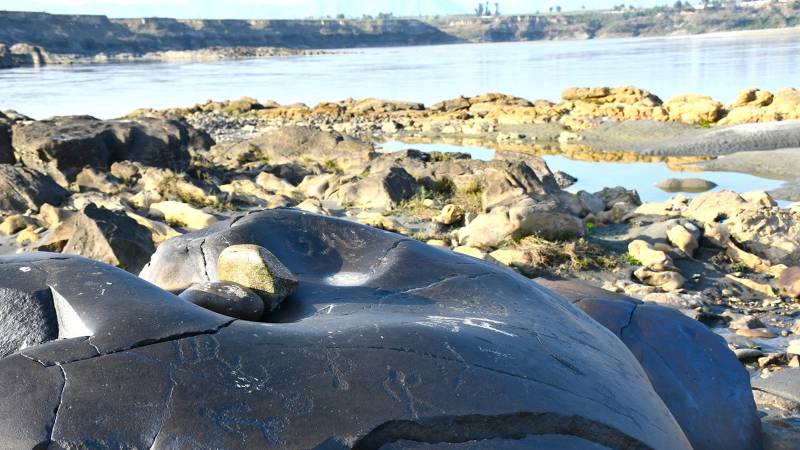
Rock carvings, a unique feature found along the Indus River and its tributaries in Pothohar, have not received the scholarly attention they deserve. During my excursions in the Pothohar plateau in the Punjab, I have come across several sites representing ancient and modern rock carvings. These carvings, distinct in their own right, have not escaped my anthropological gaze. The main themes in the rock art of Pothohar include humans, animals, hunting scenes, religious symbols, games, geometric signs and many others.
Attock’s Bagh Neelab, which lies on the left bank of the Indus, is home to the most ancient petroglyphs, with more than 30 boulders depicting prehistoric and historic period petroglyphs. I visited this site on the 1st of March 2020, with Raja Noor Muhammad Nizami, historian and owner of the large private library in Hasan Abdal’s Bhoi Ghar village and Muhammad Imran Khan Khattar, the author of Neelab Wa Khattar. The most prominent carvings include those of humped bull (zebu), a unique and prevailing motif in Bagh Neelab's rock art. One does not find such refined bull carvings elsewhere in Pothohar. One of the large boulders depicts bull images of various sizes with prominent horns. The entire surface of the boulder is covered with bull images. A few bulls are engraved with elongated bodies, a feature recurrent in Sindh's rock art.
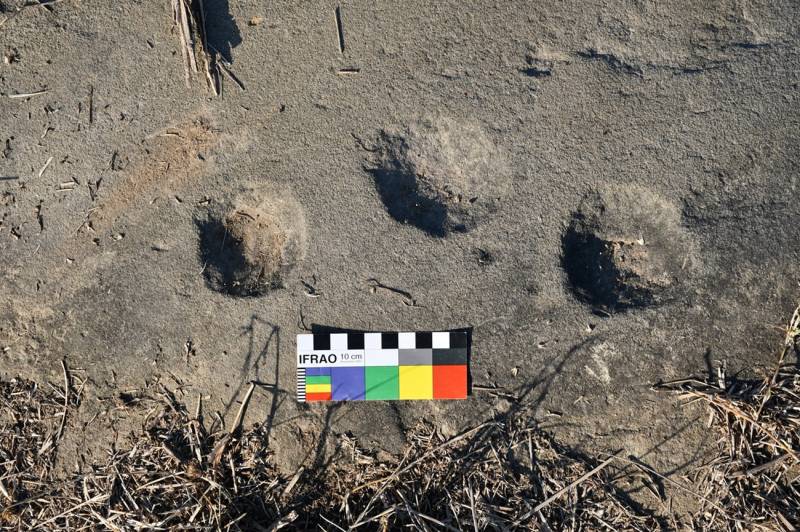
Apart from this large boulder, several others represent bulls made with pecking, bruising, engraving and other techniques. Aside from bull images, anthropomorphic figures are engraved on a few boulders. One of the boulders shows two ancient anthropomorphic figures in combat surrounded by bull images. Another boulder represents two warriors holding bows and arrows. Above the depictions of archers are magnificent bull carvings. On a few other boulders, one can see depictions of archers and shamans before the bull images, probably representing either hunting scenes or ritual scenes of the domestication of wild bulls. There are several such depictions at Bagh Neelab. There are a few depictions of ritual scenes on the boulders. On one of the boulders is depicted a trident, and before it is an anthropomorphic figure, probably representing a deity! These engraved boulders are located on the left bank of the Indus River. On the other side of the Indus River are also located a few engraved boulders at Mandori in KP’s Nowshera district.
Apart from Bagh Neelab, rock carvings are found at hundreds of other sites in the Attock, Rawalpindi, Jhelum, and Chakwal districts. Most of these carvings are found along the Soan River and its various tributaries. Some of the petroglyphs are modern, but others are very ancient. Some ancient petroglyphs are found in a few villages in Attock’s Pindigheb tehsil. I visited one of the rock art sites in Pindigheb with the help of Sahibzada Farooq Ahmad, the Gaddi Nashin of Khwaja Ahmad Mairvi Darbar of Maira Sharif.
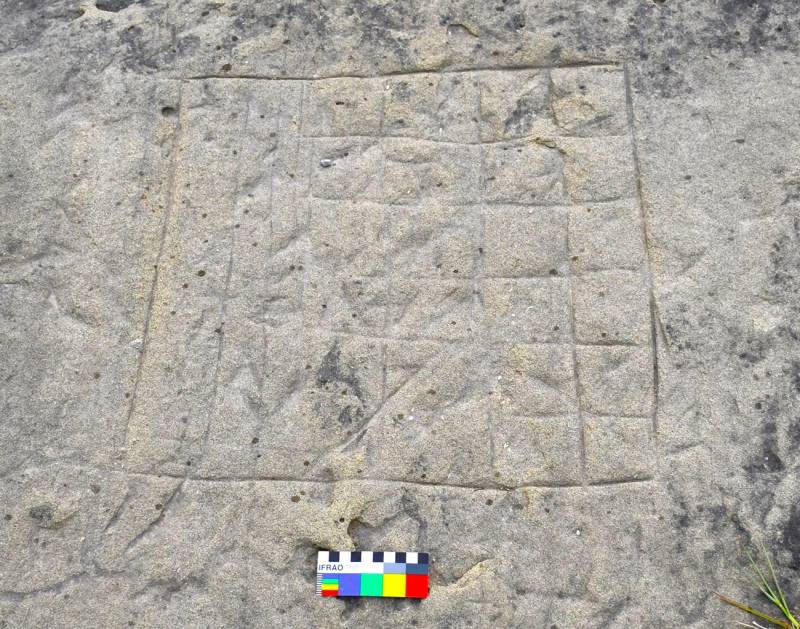
Like many other tehsils of Rawalpindi, rock carvings are found in Kallar Syedan and Gujar Khan tehsils. Most carvings are located near springs, streams, and old settlement sites. A few game boards, cup-marks and other geometric signs are engraved near the stream at Darkali Syedan village in Gujar Khan. A few game boards and other carvings are found near Chahari Bungala in Gujar Khan tehsil.
Traditional games played in Pothohar in the past are engraved on the rocks along streams, springs, old settlement sites, or any other archaeological site. They are also found along old routes and near pastures where shepherds grazed their livestock. Prominent traditional games included Chobat, Chaupar, Sath Khutar, Ath Khutar and many others.
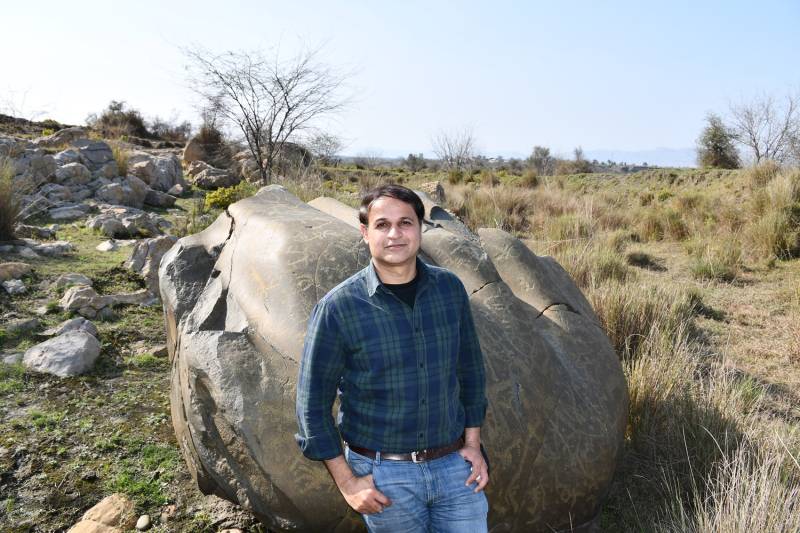
Rock art is also found in Islamabad, the capital of Pakistan. Unfortunately, the mushroom growth of housing schemes has devoured many archaeological and historical sites of Islamabad Capital Territory (ICT). There were many historical sites in the D-12 sector before its development.
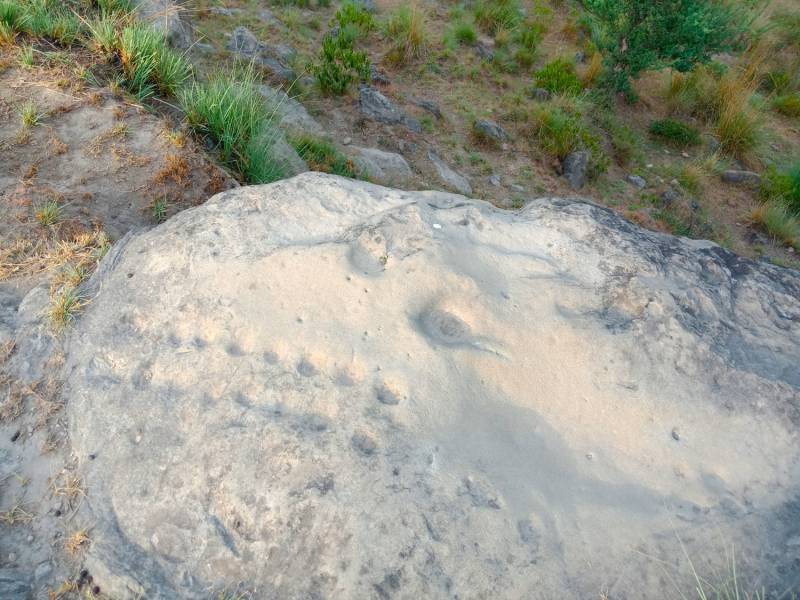
One such site was located in D-12/3 adjacent to the green belt. This site was locally called Chillagah of Mehbi Shah. This site was located in the Siri Saral village, which had a rich historical past. Before partition, the village was predominately inhabited by the Hindus and Sikhs. During the interviews with local people, I learned that there were six mohallahs in Siri Saral village, including Rera, Sumbal, Lamyan Dan, Dhok Parri, Saral and Dher Shah Sikander.
People used three large potholes to grind spices beside these cup-marks or game boards
There were a few historical sites in the village. The environmental wing of CDA preserved a huge banyan tree. They built a wooden enclosure around the tree and installed a plaque showing basic information about banyan trees and conservation activities. There was also a wall enclosure of saint Mehbi Shah, who meditated here for some time before setting out for Jammu Kashmir. This chillagah or bethak of the saint is still greatly revered by the local population, who visit it on a number of occasions.
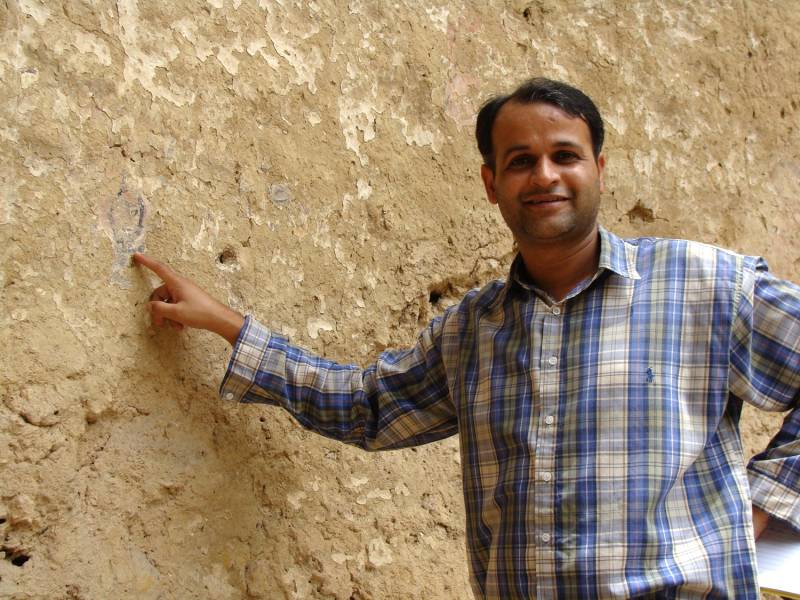
Under the monumental banyan tree lie ancient cup-marks. Fauzia Minallah, a visual artist, children’s author, and advocate for old-growth trees, first told me about these cup marks. Following her suggestions, I visited this site in 2011. I revisited it in 2013 and 2014. There were two types of cup-marks. First, they were engraved/pounded on the rock in two horizontal rows flanked by one on either row. This was a game board. There were two such game boards, one modern and ancient. Locally, this game was called Sat or Ath Khutar, meaning seven or eight holes. Two players used to play the game at one time. I learned how it was played from Malik Iftikhar Hussain of Siri Saral.
There were also three mortars or potholes near the banyan tree. People used three large potholes to grind spices beside these cup-marks or game boards. These potholes, which are types of cup-marks, are locally called langri.
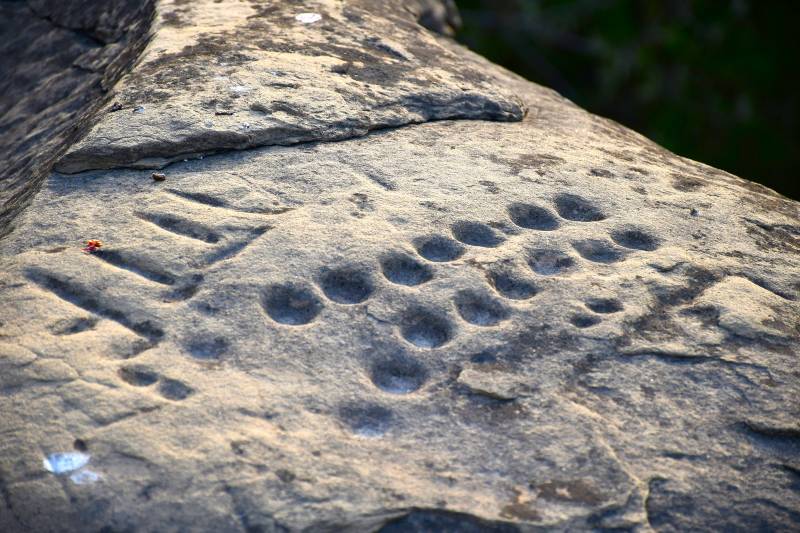
North of the banyan tree were the remains of the old settlement. When I visited in 2011, potsherds were scattered at the site. There was also an old graveyard containing about 12 graves made of kanjur stone. Similar graves can also be seen at Mohra Malhiar village in Shah Allah Ditta, a site noted for caves which were believed to have been used by both Buddhists and Hindu ascetics. One of the distinctive features of the caves was painting. The exterior wall of a cave was painted, traces of which can still be seen. When I first visited the site in 1998, I saw the torso of a Buddhist monk or a Hindu ascetic on the exterior wall of the cave. It was extant when I revisited the site in 2001, 2002, 2004, 2006, 2007, 2009, 2013, and 2015 respectively.
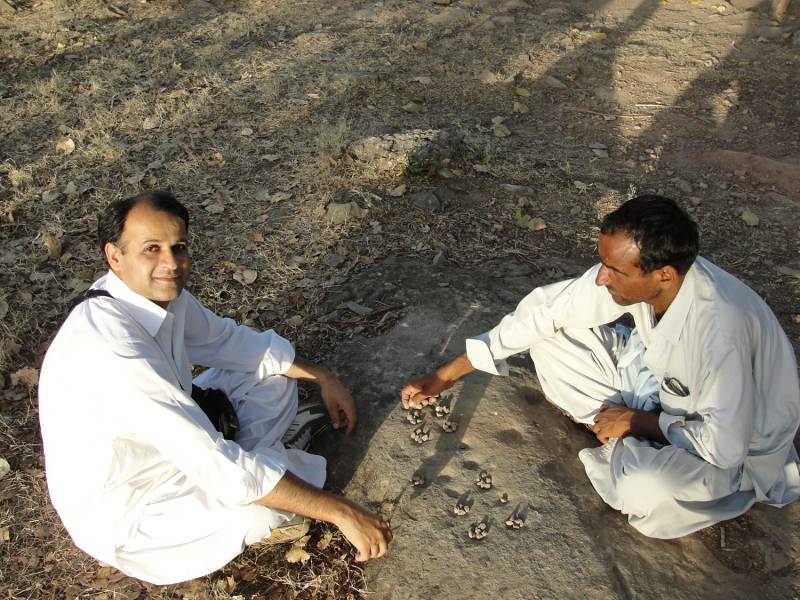
Cup-marks are found everywhere in Pothohar and even in the Salt Range. Some of the prominent sites are located in Dadocha, Gumbat Luni near Kallar Syedan, G-11/4 north of SLS School Building, Sunday Bazaar in G-10/1, Bhimber Trar, Darwala, Peja, Mooriyan, Kirpa, and Ladhyot Syedan villages in Islamabad. Cup-marks are also found on the right bank of the Soan River near Ladhyot Syedan and Sigga Syedan villages in Islamabad.
I also discovered ancient petroglyphs in Islamabad’s Buland Market in G-10/1 in 2010. There is a rock shelter near Usman mosque, which contains the ancient petroglyphs that I discussed in my article published in The Friday Times-Naya Daur on May 15, 2020. I have also discussed cup-marks and other carvings on the top of the G-13 rock shelter. Moreover, cup-marks are found in many other villages in Islamabad and Rawalpindi, Attock, and Jhelum.

